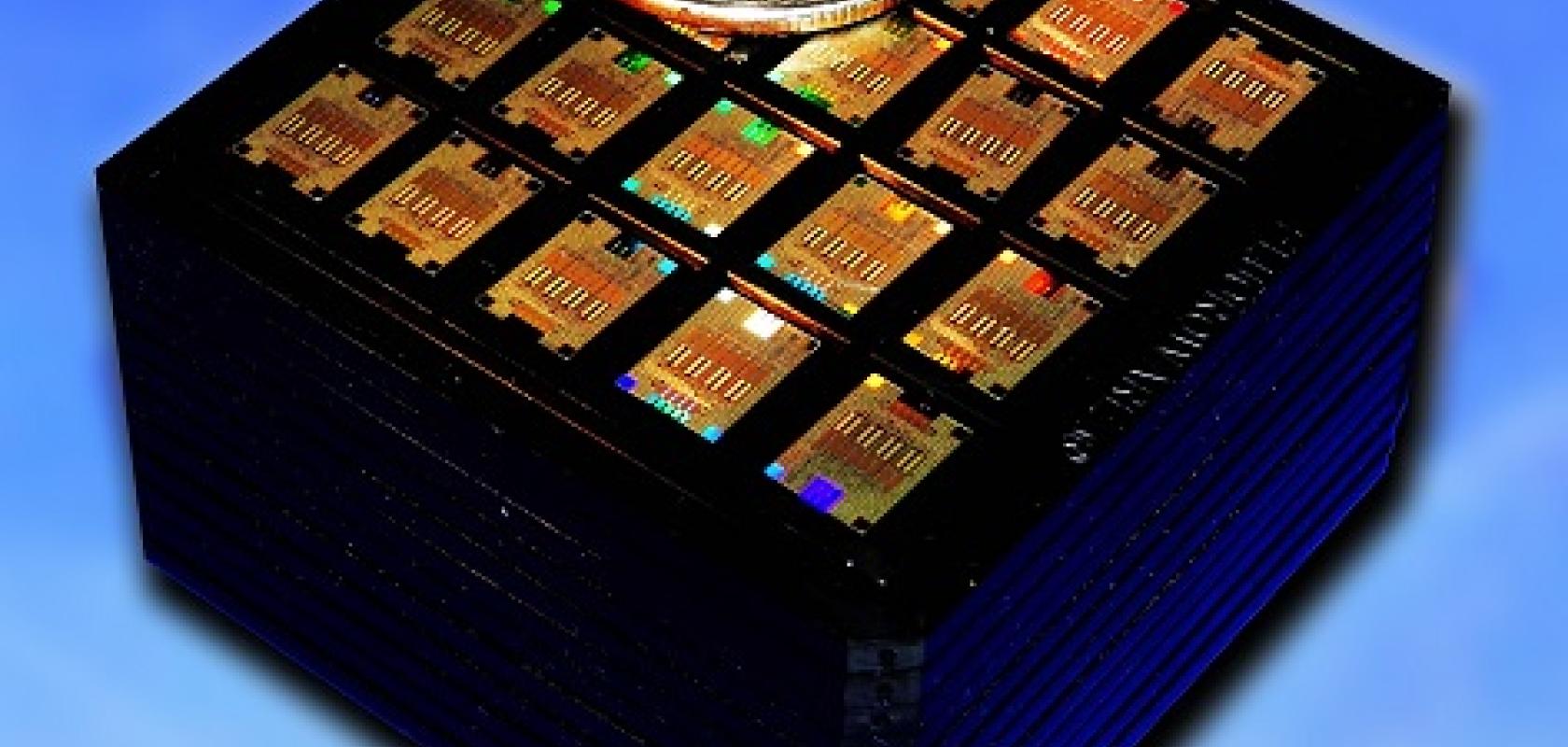Silicon photonics just took a significant step closer to commercial reality. IBM has announced that its silicon photonics development has reached a significant milestone, which will soon allow the technology to move into production.
IBM engineers have designed and tested a silicon photonics chip that will enable manufacturing of 100Gb/s optical transceivers to improve connectivity inside data centres. This will allow data centres to offer greater data rates between servers and switches to boost bandwidth for cloud computing applications.
To this end, IBM has integrated different optical components side-by-side with electrical circuits on a single silicon chip. The essential parts of an optical transceiver, both electrical and optical, can be combined monolithically on one silicon chip, and are designed to comply with standard silicon chip manufacturing processes, the company says.
The silicon photonics effort is part of IBM Research’s $3 billion programme to push the limits of computing chip technology. The latest development builds on work reported in 2012, when IBM demonstrated the transfer to a manufacturing foundry of a silicon photonics technology for 25Gb/s WDM optical communications applications based on 90nm CMOS processes.
The company says that while the earlier announcement did contain the elements required to build optical transceivers operating at 25Gb/s per channel, the technology was not at that time described by a process design kit (PDK) – a collection of foundry-specific data files and script files used with design tools in the chip design process.
Now IBM has completed the PDK for the silicon photonics-based transceiver, and improved the reference design. This PDK provides a 90-nm CMOS-based industry-standard toolset for complete optoelectronic circuit simulation, layout, parasitic extraction, and ground-rule verification, the company told Fibre Systems.
“At that time [in 2012], the CMOS devices were not fully optimised and centred at their ideal performance targets, and the optical devices were designed for operation near 1550nm wavelength,” explained Will Green, manager of the Silicon Photonics Group at IBM Research in New York. “In our recent announcement, we demonstrated performance of a much more sophisticated reference design.”
In the latest chip, the optical elements have been designed for operation around the O-band (near 1310nm), where a number of industry multi-source agreements for coarse WDM interconnects targeting a reach of 2km have emerged (see The long and the short of it).
IBM engineers in New York and Zurich, Switzerland worked hand in hand with a high-speed electrical I/O design team in IBM Systems Unit to design a number of variants of this chip. The result is a reference design that demonstrates transmission and reception of high-speed data using four laser wavelengths, each operating as an independent 25Gb/s optical channel. Within the transceiver design, these four channels can be wavelength multiplexed on-chip to provide 100Gb/s aggregate bandwidth over a duplex singlemode fibre.
In this design, the lasers are off chip and brought in via optical fibres, one fibre for each wavelength. IBM’s Systems Unit has been developing the packaging necessary to attach the lasers to the chip itself (see IBM claims advance in silicon photonics packaging).
IBM doesn’t plan to become vendor of optical modules itself, judging from its comments. “The successful demonstration of multi-channel 25Gb/s operation illustrates the facility with which IBM's silicon photonics design environment can be used by clients to develop manufacturable short-reach interconnect solutions,” said Green.
When asked how soon the technology would reach the market, Green replied: “We are seeing significant momentum for silicon photonics, first in data centres. You will probably see high-volume deployment of the technology in a couple of years.”
The details of IBM’s breakthrough were described at CLEO 2015 earlier this month during the invited presentation entitled “Demonstration of Error Free Operation up To 32 Gb/s From a CMOS Integrated Monolithic Nano-Photonic Transmitter”.


